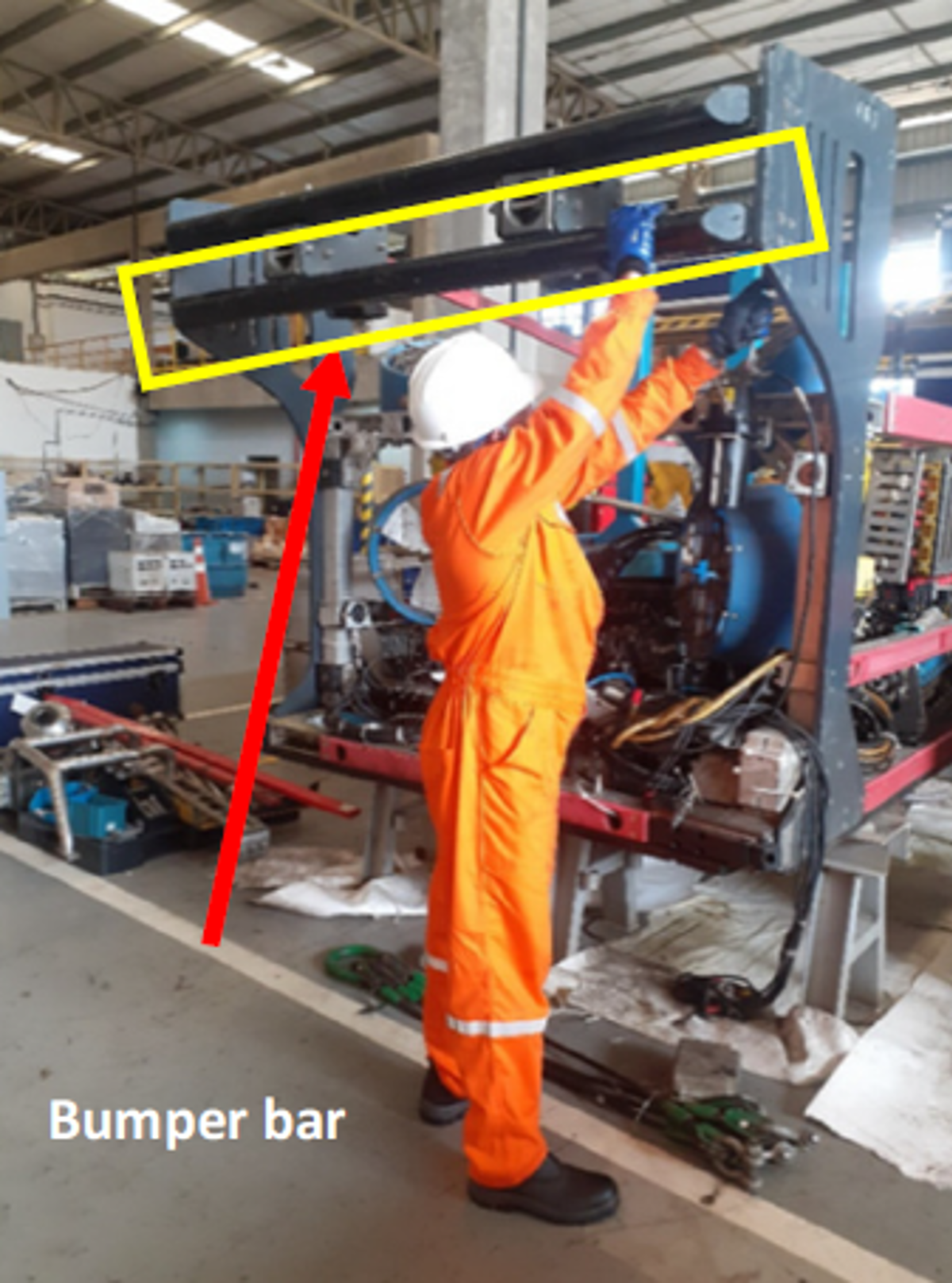Broken finger during ROV maintenance
- Safety Flash
- Published on 16 December 2020
- Generated on 4 July 2025
- IMCA SF 34/20
- 2 minute read
Jump to:
A worker broke his finger whilst working on an ROV
What happened?
The incident occurred during ROV maintenance when the worker was single-handedly removing a bumper bar located above head height. During the process, the bumper bar snagged on the ROV structure.
This required the injured person (a short service employee) to free it by hand.
The weight of the bumper bar (approximately 29 kg) was more than the employee had anticipated, therefore he was unable to support it.
His right hand ring finger was bent backwards by the falling bumper bar, resulting in a metacarpal fracture.

Lessons learned
- Ensure your tasks are sufficiently risk assessed and planned – have you got the right people tools and equipment available? Are the work instructions clear?
- Ensure the task is adequately supervised to ensure it happens safely and under control.
- Ensure that everyone involved – especially short service employees or third party contractors are competent: fully inducted, supported and mentored, even if they have previous industry sector and/or company experience.
- Communicate!! Task-specific toolbox talks should be carried out before starting work.
Members may wish to refer to:
IMCA Safety Flashes summarise key safety matters and incidents, allowing lessons to be more easily learnt for the benefit of the entire offshore industry.
The effectiveness of the IMCA Safety Flash system depends on the industry sharing information and so avoiding repeat incidents. Incidents are classified according to IOGP's Life Saving Rules.
All information is anonymised or sanitised, as appropriate, and warnings for graphic content included where possible.
IMCA makes every effort to ensure both the accuracy and reliability of the information shared, but is not be liable for any guidance and/or recommendation and/or statement herein contained.
The information contained in this document does not fulfil or replace any individual's or Member's legal, regulatory or other duties or obligations in respect of their operations. Individuals and Members remain solely responsible for the safe, lawful and proper conduct of their operations.
Share your safety incidents with IMCA online. Sign-up to receive Safety Flashes straight to your email.